#clinopodium nepeta
Explore tagged Tumblr posts
Text







#lesser calamint#clinopodium nepeta#calamintha nepetoides#flowering herbs#microflora#purple coneflower#echinacea purpurea#hydrangea#battery park#the battery#nyc
1 note
·
View note
Text
#spezie#spices#tumblr italia#italy#rosmarino#salvia#alloro#cumino#chiodi di garofano#origano#prezzemolo#timo#mentuccia#noce moscata#ill be honest im hoping for a specific one to pull out a vanillasweep#i was today years old when i found out that 1. la mentuccia è romana? o c'e una pianta specifica che è la variante romana lol#e 2. la traduzione in inglese non è stabilita? idk#weird
27 notes
·
View notes
Text

C – Clinopodium nepeta (L.) Kuntze – Clinopodio nepeta (Lamiaceae)
13 notes
·
View notes
Text

Clinopodium nepeta, lesser calamint, a fragrant and attractive member of the mint family Lamiaceae. Quite a nice little patch of it here!
0 notes
Text
18 au 24 octobre 2021
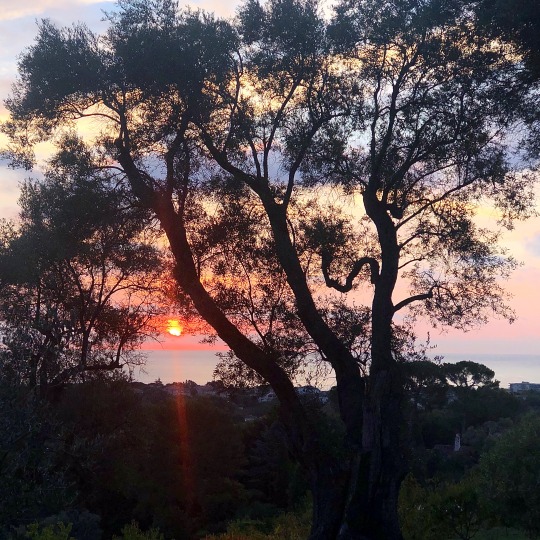
François and I took a walk in Nice !

Monday Alejandro came for a visit and we decided I needed to remove as much Achillea millefolium from the new prairie as possible. It has taken over and is smothering a lot of smaller plants.
Tuesday James came for a meeting with Mme. et M. to talk about the master plan for the domaine and what should happen next. Tuesday evening François and I headed over to Nice for a dance performance in the Nice Opera.
Ronie came back for a week to help around the house and he had some time to help me in the garden. We did a lot of autumn cutting back and removing Achillea millefolium.
Wednesday morning I had a dentist appointment to remove the very large cavity and thankfully it didn’t turn out to be a root canal. I now have a temporary filling until my appointment next week. Wednesday afternoon François and I walked around Antibes then we headed over to Nice. François headed to the airport in the car and I took a train back to Antibes. It was so nice to see him, even if it was a very short visit.
Thursday and Friday after work I met up with André before he returned to London on Saturday.
Saturday morning I made my way to Alejandro’s for an 8.00 departure to Italy. As soon as we crossed the border, we hit a lot of traffic. At the exit to Bordighera, Alejandro just turned off the engine and everyone was out of their car. After about 30 minutes people started backing up to the closest exit, only 100 behind us, and there we headed to the coastal road to continue our journey. We went through Sanremo, Imperia and finally parked in Oneglia. There we did some shopping and enjoyed a nice lunch.
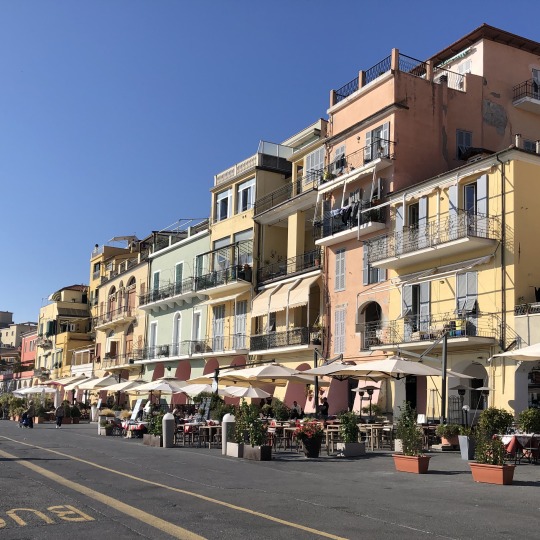
After lunch we drove to Vivaio Ciancavare, a nursery in Villa Viani where we met up with Helena, James and Vincent. We enjoyed some time meandering around the nursery before heading in when the sun went down and enjoyed a delicious meal.
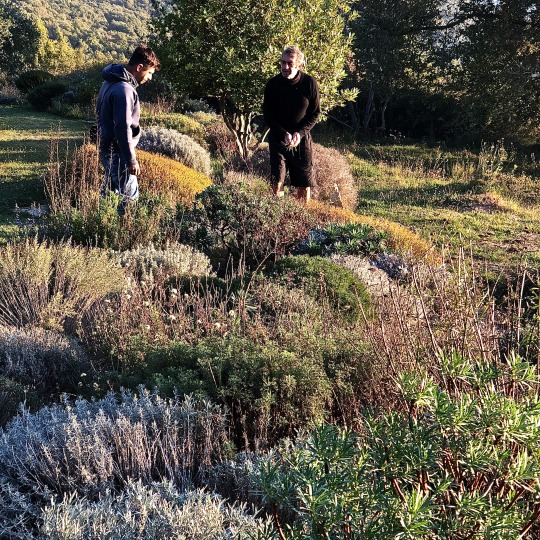
Sunday we perused the nursery and made lists of plants that we’d like to try in our respective gardens. We enjoyed a delicious lunch then headed home. I hitched a ride with Helena and James this time. It was a very nice weekend and so nice to meet the wonderful people working so hard to produce plants for our dry gardens.
Cours de français hebdomadaire
un embouteillage - a traffic jam
dans les embouteillages - in gridlock
à une allure d'escargot - going at a snail’s pace
un poste de péage - toll booth
rampant le long - creeping along
accélérant - speeding up
marche arrière sur la route - reversing down the road
être coincé dans la circulation - to be stuck in traffic
en retard - running late
être en retard pour le déjeuner - to be running late for lunch
Plant of the week
Lamiaceae Clinopodium nepeta (L.) Kuntze
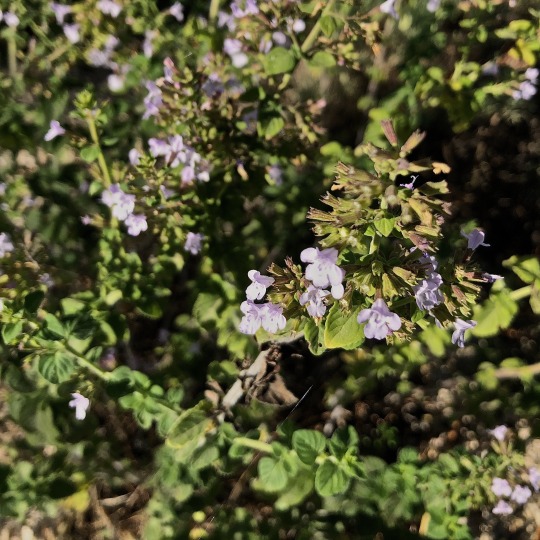
common name(s) - lesser calamint, nepetella, nepitella infraspecific(s) - C. n. subsp. nepeta; C. n. subsp. spruneri (Boiss.) Bartolucci & F.Conti; C. n. subsp. subisodontum (Borbás) Govaerts synonym(s) - Acinos transsilvanica Schur; Calamintha acinifolia Sennen; C. alboi Sennen; C. athonica Rchb.; C. barolesii Sennen; C. bonanovae Sennen; C. bonanovae Sennen & Pau; C. brevisepala Sennen; C. caballeroi Sennen & Pau; C. cacuminiglabra Sennen; C. cantabrica Sennen & Elias; C. dilatata Schrad.; C. dufourii Sennen; C. enriquei Sennen & Pau; C. eriocaulis Sennen; C. ferreri Sennen; C. gillesii Sennen; C. guillesii Sennen; C. josephi Sennen; C. largiflora Klokov; C. litardierei Sennen; C. longiracemosa Sennen; C. mollis Jord. ex Lamotte; C. nepeta (L.) Savi; C. n. f. hirsutissima (Pant.) Hayek; C. n. var. athonica (Rchb.) K.Koch; C. n. var. hirsutissima Pant.; C. n. var. mollis (Jord. ex Lamotte) Nyman; C. n. var. nepetoides (Jord.) Nyman; C. nepetoides Jord.; C. obliqua Host; C. officinalis var. nepeta (L.) Rchb. & Rchb.f.; C. parviflora Lam.; C. peniciliata Sennen; C. rotundifolia Host; C. sennenii Cadevall; C. suavis Sennen; C. thessala Hausskn.; C. transsilvanica (Jáv.) Soó; C. trichotoma Moench; C. vulgaris Clairv.; Clinopodium nepeta subsp. nepeta; Faucibarba parviflora Dulac; Melissa aetheos Benth.; M. nepeta L.; M. obtusifolia Pers.; M. parviflora Salisb.; Micromeria byzantina Walp.; Micromeria canescens Walp.; Satureja brauneana var. transsilvanica Jáv.; S. calamintha subsp. nepeta (L.) Briq.; S. calamintha var. mollis (Jord. ex Lamotte) Briq.; S. calamintha var. nepeta (L.) Briq.; S. calamintha var. nepetoides (Jord.) Briq.; S. mollis (Jord. ex Lamotte) E.Perrier; S. nepeta (L.) Scheele; S. nepetoides (Jord.) Fritsch; Thymus athonicus Bernh. ex Rchb.; T. minor Trevir.; T. nepeta (L.) Sm. conservation rating - none native to - Mediterranean to Iran location - Domaine de l’Orangerie leaves - aromatic, ovate grey-green flowers - cyme of tiny, up to 1cm, tubular, two-lipped white or pale lilac in summer fruit - capsule habit - compact, bushy mound, short-lived perennial, to 400mm tall and wide habitat - dry, uncultivated meadows, escarpments, walls, on calcareous substratum and it grows from sea level up to 1,500m pests - generally pest-free disease - powdery mildew hardiness - to -15ºC (H5) soil - light, sandy, well-drained sun - full sun propagation - seed sown in spring; division in spring pruning - cut back in autumn nomenclature - Lamiaceae - gullet, the name in Pliny refers to the gaping mouth of the corolla; Clinopodium - bed-foot, Dioscorides’ name for the knob-shaped appearance of the inflorescence; nepeta - the name in Pliny for a plant from Nepi, Etruria, Italy NB - The leaves are harvested in July as the plant comes into flower and are dried for later use; an infusion is beneficial in cases of flatulent colic and weaknesses of the stomach, it is also used to treat depression, insomnia and painful menstruation.
References :
Gledhill, David, (2008) “The Names of Plants”, fourth edition; Cambridge University Press; ISBN: 978-0-52168-553-5
INPD (Inventaire National du Patrimoine Naturel) [online] https://inpn.mnhn.fr/espece/cd_nom/91910?lg=en [5 Nov 21]
IUCN [online] http://www.iucnredlist.org/search [5 Nov 21]
North Carolina State Extension [online] https://plants.ces.ncsu.edu/plants/clinopodium-nepeta/ [5 Nov 21]
Pépinière Filippi [online] https://www.jardin-sec.com/jardin-sec_web/fr/FICHETECHNIQUE.awp?P1=Calamintha%20nepeta&P2=FR [5 Nov 21]
Plants for a Future [online] https://pfaf.org/user/Plant.aspx?LatinName=Calamintha+nepeta [5 Nov 21]
Plants of the World [online] http://plantsoftheworldonline.org/taxon/urn:lsid:ipni.org:names:445833-1 [5 Nov 21]
Royal Horticultural Society [online] https://www.rhs.org.uk/plants/2605/calamintha-nepeta/details [5 Nov 21]
Un Mondo Ecosostenible [online] https://antropocene.it/en/2017/12/21/clinopodium-nepeta/ [6 Nov 21]
Wikipedia [online] https://en.wikipedia.org/wiki/Clinopodium_nepeta [5 Nov 21]
World Flora Online [online] http://www.worldfloraonline.org/taxon/wfo-0000892607 [5 Nov 21]
SARS-CoVid-2 update (incidece rate per 100,000)

0 notes
Text


kleinblütige Bergminze
(Clinopodium nepeta) das unscheinbare Kräutlein wächst fleissig vor der Büroterrasse.
Noch 31 Pflanzen.
0 notes
Photo
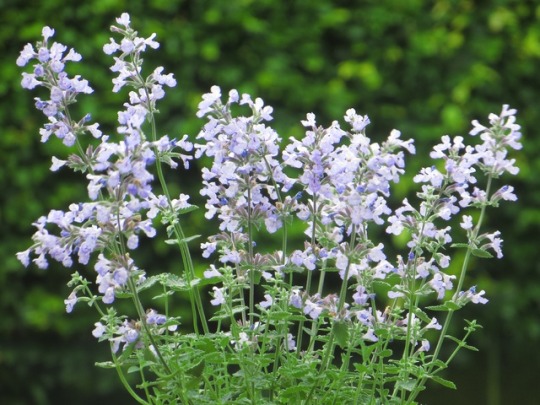
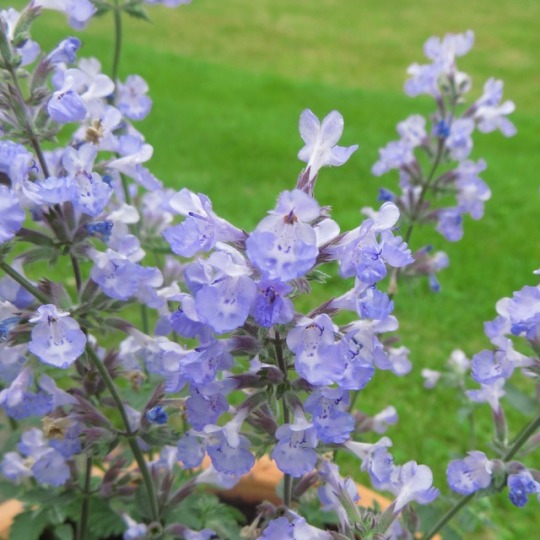

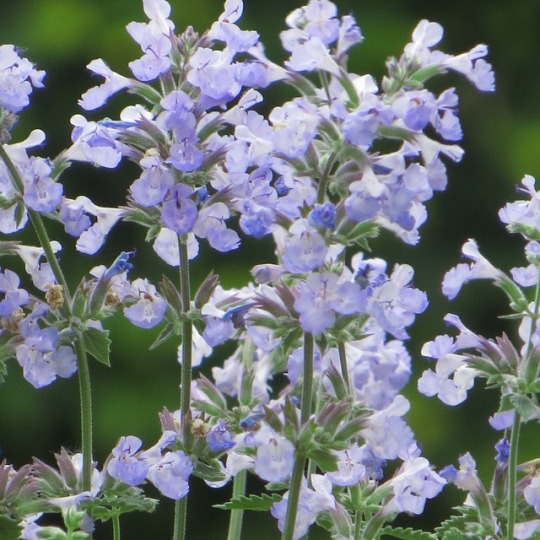
Kleinblütige Bergminze, Drüsige Bergminze, Steinquendel | Lesser calamint
Clinopodium nepeta (Syn.: Calamintha nepeta)
#Kleinblütige Bergminze#Drüsige Bergminze#Steinquendel#Bergminze#Lesser calamint#Clinopodium nepeta#Calamintha nepeta
0 notes
Text
Lesser Calamint
According to my plant App this is the name for this plant or Clinopodium nepeta. I’ll not remember either name. FOTD

View On WordPress
0 notes
Text




C - Clinopodium nepeta (L.) Kuntze (= Calamintha n.) - Mentuccia comune (Lamiaceae)
6 notes
·
View notes
Text


Mentuccia (Clinopodium nepeta (L.) Kuntze (= Calamintha n.), Lamiaceae)
18 notes
·
View notes
Photo

Mentuccia (Clinopodium nepeta (L.) Kuntze (= Calamintha n.), Lamiaceae)
13 notes
·
View notes
Photo




Nepetella (Clinopodium nepeta (L.) Kuntze (= Calamintha n.), Lamiaceae)
20 notes
·
View notes
Photo
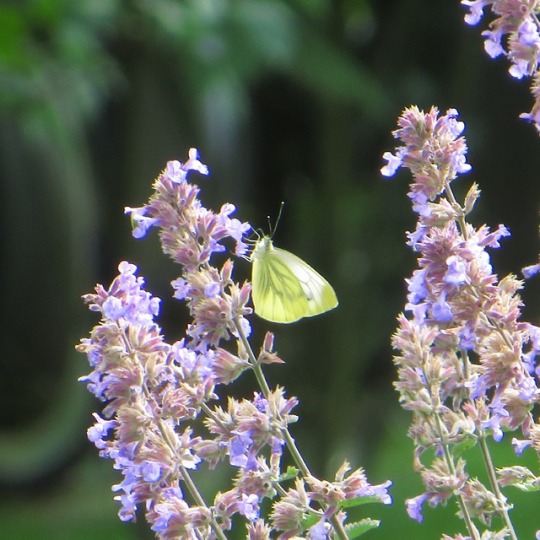
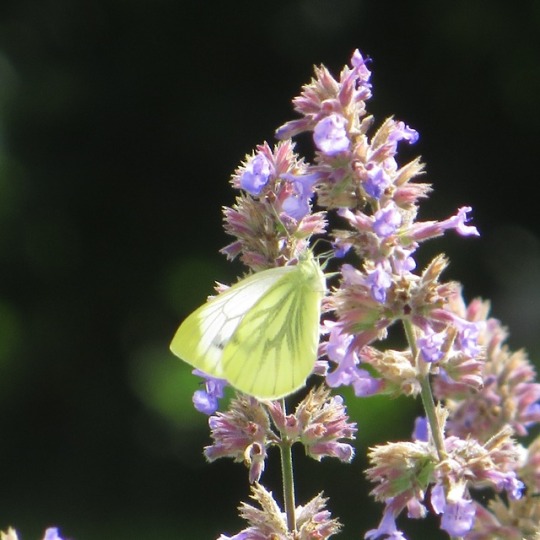
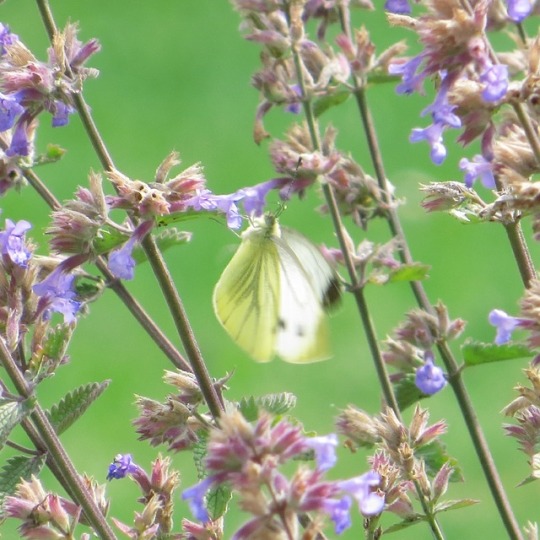
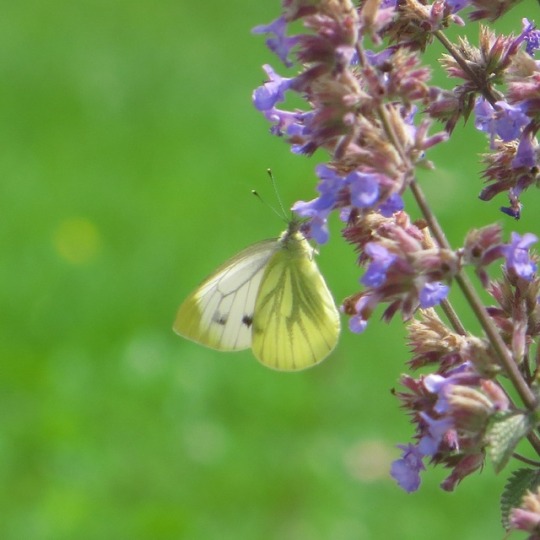
Großer Kohlweißling | (Large) cabbage white
Pieris brassicae
Kleinblütige Bergminze, Drüsige Bergminze, Steinquendel | Lesser calamint
Clinopodium nepeta (Syn.: Calamintha nepeta)
#GroßerKohlweißling#Largecabbagewhite#Cabbagewhite#Largewhitebutterfly#Whitebutterfly#Pierisbrassicae#KleinblütigeBergminze#DrüsigeBergminze#Steinquendel#Lessercalamint#Clinopodiumnepeta#Calaminthanepeta
3 notes
·
View notes
Photo

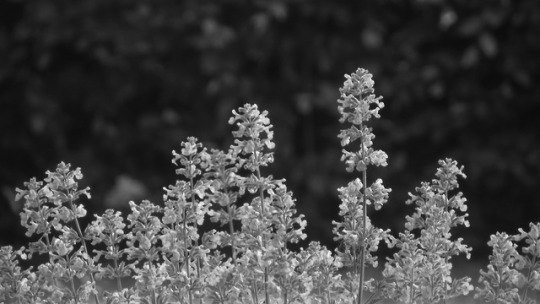
Kleinblütige Bergminze, Drüsige Bergminze, Steinquendel | Lesser calamint
Clinopodium nepeta (Syn.: Calamintha nepeta)
#KleinblütigeBergminze#DrüsigeBergminze#Steinquendel#Lessercalamint#Clinopodiumnepeta#Calaminthanepeta
4 notes
·
View notes
Photo

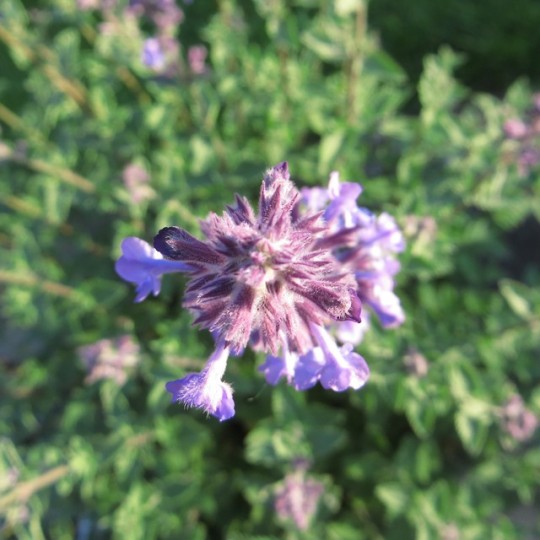
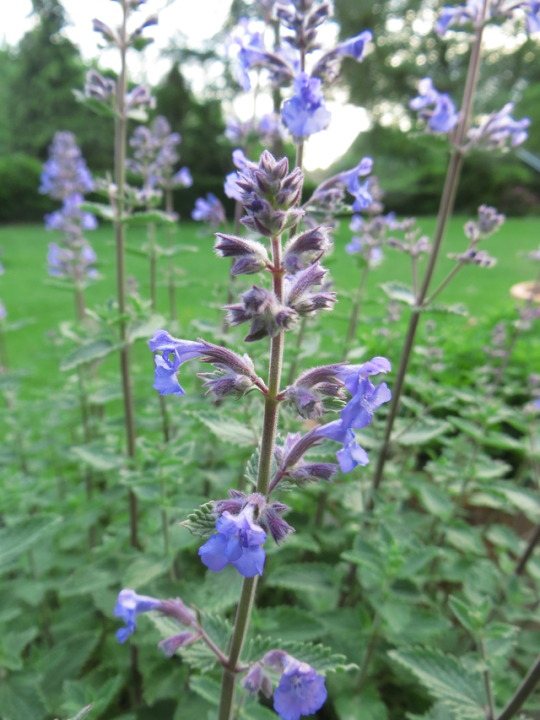
Kleinblütige Bergminze, Drüsige Bergminze, Steinquendel | Lesser calamint
Clinopodium nepeta (Syn.: Calamintha nepeta)
#KleinblütigeBergminze#DrüsigeBergminze#Steinquendel#Lessercalamint#Clinopodiumnepeta#Calaminthanepeta
2 notes
·
View notes
Text
18 au 24 avril 2022
This week was all about a big chopping back of everything. I am surprised how much everything is growing given we’ve only had four days of good rain all winter. It is also time for the grasses to come down so they can put on a nice bright green for early summer and have nice seed heads by autumn. I cut back about a third of them last autumn so I can have a few older and a few newer. I like the rhythm they have.
Thursday Alejandro came by to see how I’m getting on and to profer a few suggestions of things I could also be doing. We talked through chopping back the sages around the pool and decided to just cut back the Achillea umbellata and the Clinopodium nepeta. We enjoyed a late lunch of chard pie with some fish on the side.
Friday, I pricked out several things and cleaned up from my big chop on Wednesday and Thursday.
Things I pricked out this week:
Euonymus carnosus
Hesperis matronalis
Pelargonium althaeoides
I had my physio appointment around midday then headed out for another aïoli.

A poster I spotted in the restaurant, dated 9 September 1950.

When I returned to the domaine, I found my ladybirds had been delivered. So, after a coffee, I headed back into the garden and the potager to distribute the adults and hang the eggs.


After the ladybirds, I replaced the fencing Couli had put up near the main gate at my house. I discovered he had attached the Wisteria to the fence using wire and he had tied it up very tightly. I didn’t want the Wisteria to be strangled or grow over the wiring. And, as it turned out, this part of the fence is 2m tall, not 1,5m like the fence along my neighbour’s side. That took a few hours (in the photo below, left is new, right is old falling apart). Dusk arrived before I could completely tie up the Wisteria; however, the fence is up and looking better. I now have several 1,5m panels that I can put up on the other fence which is also falling down.

Every evening this week I had dinner with Julia, Jen and their daughters visiting from Berlin. Tuesday they came to mine for dinner. One of their daughters is great in the kitchen so she cooked for us three of the nights. It was very nice spending so much time with them and exploring Antibes a bit.
Rain finally arrived Saturday. It was a great day of rain. I was contemplating watering the prairie because it is still the rainy season, so I wouldn’t be irrigating out of season. I may still put the sprinklers on once in May and once in June to ensure it is looking fabulous for the party here in July.
Saturday I read through an interesting book Luc and Éric gave me last weekend, Les Fleurs de la Terre à l’Assiette. It’s a book of edible flowers and over sixty recipes ! Saturday evening I headed over to Ilza and Daniela’s for a delicious fondue. The weather was perfect for the warming, oozing cheese and good Italian red wine.
Sunday I finished reading Jan Morris’s Sultan in Oman and enjoyed a quiet day catching up on YouTube and of course some Duolingo. I also spoke with François for a bit. It is election day and we will find out after 20.00 who the next president of France will be; fingers crossed it will be Emmanuel Jean-Michel Frédéric Macron for five more years.
It looks like Macron has been re-elected, phew.
Plant of the week
Fagaceae Quercus pubescens Willd.

common name(s) - downy oak, pubescent oak, truffle oak; français : chêne pubescent; Deutsch : Flaum-Eiche; italiano : quercia pubescente, roverella Infraspecific(s) - Quercus pubescens subsp. crispata (Steven) Greuter & Burdet; Quercus pubescens subsp. pubescens; Quercus pubescens subsp. subpyrenaica (Villar) Rivas Mart. & C.Saenz synonym(s) - (276!) Eriodrys lanata Raf.; Quercus adjecta Gand.; Q. admixta Gand.; Q. aegilops Mill.; Q. aegilops var. pendula Neill; Q. alba var. pubescens (Willd.) Willd.; Q. ambigua Kit. ex Rochel; Q. amblyodes Gand.; Q. amplifolia Guss.; Q. amplissima Gand.; Q. ampulleana Gand.; Q. annexa Gand.; Q. anxiosa Gand.; Q. appenina Lam.; Q. appenina subsp. amplifolia (Guss.) Nyman; Q. aspera Bosc; Q. asperata Pers.; Q. authemanii Gand.; Q. bacunensis Vuk.; Q. banja Endl.; Q. bellojocensis Gand.; Q. bertolonii Gand.; Q. brachyloba Jord.; Q. brachyphylla Kotschy; Q. brachyphylloides Vuk.; Q. brandisii (Vuk.) Vuk.; Q. brevifolia Kotschy ex A.DC.; Q. brevipedunculata var. pubescens (Willd.) Cariot & St.-Lag.; Q. brutiorum Gand.; Q. buccarana Vuk.; Q. budayana Haberle ex Heuff.; Q. budensis (Borbás) Borbás; Q. calabrica Gand.; Q. calcarea Gand.; Q. catalaunica Gand.; Q. cerris Pall.; Q. chaberti Gand.; Q. chymodon Gand.; Q. chymophyllla Gand.; Q. cistetorum Gand.; Q. collina Schleich. ex Endl.; Q. conglomerata Pers.; Q. conobalana Gand.; Q. crassiuscula Gand.; Q. crenifolia Gand.; Q. croatica Vuk.; Q. cupaniana Guss.; Q. dalechampii var. parvifolia Lojac.; Q. dalmatica Radic; Q. d. f. biokovensis Radic; Q. d. f. fratris-marci Radic; Q. d. f. fratris-zorani Radic; Q. d. f. parathalassias Radic; Q. d. subsp. biokovensis Radic; Q. d. subsp. parathalassias Radic; Q. d. var. biokovensis Radic; Q. d. var. fratris-marci Radic; Q. d. var. fratris-zorani Radic; Q. densifolia Gand.; Q. derelicta Gand.; Q. desiderabillis Gand.; Q. dimidiens Gand.; Q. diversifrons Borbás; Q. drumensis Gand.; Q. elegantula Gand.; Q. erythrochlamys Gand.; Q. erythrolepis (Vuk.) Vuk.; Q. faginea Ten.; Q. fallax Gand.; Q. glareosa Gand.; Q. grandis Gand.; Q. halophila Gand.; Q. helvetica Gand.; Q. heterophylla Vuk.; Q. humilis Mill.; Q. h. f. globulosa (Vuk.) F.M.Vázquez; Q. h. f. oxycarpa (Raddi) F.M.Vázquez; Q. h. f. parviglandis (Vuk.) F.M.Vázquez; Q. h. f. rostrata (Vuk.) F.M.Vázquez; Q. h. subsp. lanuginosa (Lam.) Franco & G.López; Q. ilicifolia Koord. & Valeton ex Seemen; Q. indifferens Gand.; Q. inops Gand.; Q. interruptella Gand.; Q. isodes Gand.; Q. jucunda Gand.; Q. kovatsiana Gand.; Q. lacinifolia Vuk.; Q. laciniosa Boreau; Q. lanuginosa (Lam.) Thuill.; Q. l. f. microphylla Gavioli; Q. l. f. pichleri Beck; Q. l. subsp. brachyphylla (Kotschy) A. Camus; Q. l. subsp. brachyphylla (Kotschy) Nyman; Q. l. var. amplifolia (Guss.) Borzí; Q. l. var. asperata (Pers.) Gürke; Q. l. var. bacunensis (Vuk.) Gürke; Q. l. var. brachycarpa Guss.; Q. l. var. brachyphylla (Kotschy) Gürke; Q. l. var. brandisii (Vuk.) Gürke; Q. l. var. brevicalyx C.Vicioso; Q. l. var. budayana (Haberle ex Heuff.) Nyman; Q. l. var. conglomerata (Pers.) Nyman; Q. l. var. croatica (Vuk.) Gürke; Q. l. var. cupaniana (Guss.) A.Camus; Q. l. var. dissecta (Vuk.) Asch. & Graebn.; Q. l. var. erythrolepis (Vuk.) Gürke; Q. l. var. faginea Nyman; Q. l. var. globulosa (Vuk.) Gürke; Q. l. var. glomerata (Lam.) Asch. & Graebn.; Q. l. var. gussonei Borzí; Q. l. var. heterophylla Gürke; Q. l. var. lacera (Vuk.) Gürke; Q. l. var. lacinifolia (Vuk.) Gürke; Q. l. var. laciniosa (Boreau) A. Camus; Q. l. var. laciniosa (Boreau) Nyman; Q. l. var. lamarckiana Issler; Q. l. var. macrocarpa Tod., Asch. & Graebn.; Q. l. var. macrolepis (Borzí) Gürke; Q. l. var. microbalanos (Boreau) Schur; Q. l. var. microcarpa Borzí; Q. l. var. microlepis (Vuk.) Gürke; Q. l. var. montana (Tod.) A.Camus; Q. l. var. oblongata (Tod.) A.Camus; Q. l. var. oxycarpa (Raddi) Gürke; Q. l. var. oxycarpa (Raddi) Nyman; Q. l. var. parviglandis (Vuk.) Asch. & Graebn.; Q. l. var. pendula (Neill) L.H.Bailey; Q. l. var. polycarpa Schur; Q. l. var. provincialis A.Camus; Q. l. var. pusilla (Vuk.) Gürke; Q. l. var. rostrata (Vuk.) Gürke; Q. l. var. rufa (Vuk.) Gürke; Q. l. var. sectifolia (Vuk.) Gürke; Q. l. var. spicata Tourlet; Q. l. var. stenolepis (Vuk.) Gürke; Q. l. var. stenophylla C.Vicioso; Q. l. var. suberoides (Debeaux) A.Camus; Q. l. var. subspicata A.Camus; Q. l. var. sulcata (Vuk.) Gürke; Q. l. var. tenorei (A.DC.) C.K.Schneid.; Q. l. var. tortulosa (Vuk.) Gürke; Q. l. var. undulata (Kit.) A.Camus; Q. l. var. virgiliana (Ten.) A.Camus; Q. leucoclada Gand.; Q. ligustica Gand.; Q. litiginosa Gand.; Q. litorea Gand.; Q. macrobalana Gand.; Q. macrostipulata Guss. ex Parl.; Q. magistri Gand.; Q. maritima Gand.; Q. mediterranea Gand.; Q. megalobos Gand.; Q. megas Gand.; Q. memorabilis Gand.; Q. menesiensis Kit.; Q. meridionalis Gand.; Q. messanensis Gand.; Q. microbalanos Boreau; Q. microlepis Vuk.; Q. minor Gand.; Q. moravica Gand.; Q. nebulosa Gand.; Q. nitidula Gand.; Q. oblongata Gand.; Q. obtenta Gand.; Q. obtusissima Gand.; Q. obtusiuscula Gand.; Q. oxybalanos Gand.; Q. oxycarpa Raddi; Q. paillotii Gand.; Q. partita Gand.; Q. paucicrenata Gand.; Q. pedunculata var. dulcis Bechst.; Q. phthiotica Gand.; Q. pichleri Beck; Q. pinnatifida C.C.Gmel.; Q. pinnatifida var. dissecta Vuk.; Q. pinnatifida var. parviglandis Vuk.; Q. platychlamys Gand.; Q. polyloba Gand.; Q. provincialis Gand.; Q. pseudoaegilopsis Petz. & G.Kirchn.; Q. pseudoaegilopsis var. pendula (Neill) Petz. & G.Kirchn.; Q. pubescens f. brandisii Vuk.; Q. p. f. rostrata Vuk.; Q. p. f. schulzei Vuk.; Q. p. subsp. lanuginosa (Lam.) O.Schwarz; Q. p. subsp. undulata O.Schwarz; Q. p. var. erythrolepis Vuk.; Q. p. var. globulosa Vuk.; Q. p. var. glomerata (Lam.) Mouill.; Q. p. var. incisa Martrin-Donos; Q. p. var. intermedia (Berang.) Vis.; Q. p. var. lacera Vuk.; Q. p. var. oxycarpa (Raddi) Vuk.; Q. p. var. pendula (Neill) H.Jaeger & Beissn.; Q. p. var. tortulosa Vuk.; Q. pulchella Gand.; Q. pungens Gand.; Q. pusilla Vuk.; Q. quadrans Gand.; Q. quaesita Gand.; Q. recondita Gand.; Q. redux Gand.; Q. robur var. brachycarpa (Guss.) Borzí; Q. r. var. brachyphylla (Kotschy) A.DC.; Q. r. var. glomerata Lam.; Q. r. var. intermedia Berang.; Q. r. var. lanuginosa Lam.; Q. r. var. macrolepis Borzí; Q. r. var. pinnatifida (C.C.Gmel.) Borzí; Q. r. var. pubescens (Willd.) Bonnier; Q. r. var. sicula (Gand.) Fiori; Q. r. var. tenorei A.DC.; Q. r. var. virgiliana Ten.; Q. romanica Gand.; Q. rufa Vuk.; Q. sancta Gand.; Q. sauteri Gand.; Q. schulzei (Vuk.) Vuk.; Q. sectifolia Vuk.; Q. serbica Gand.; Q. sessiliflora f. acutiloba Svent.; Q. s. subsp. lanuginosa (Lam.) Celak.; Q. s. subsp. virgiliana (Ten.) Nyman; Q. s. var. ambigua Nyman; Q. s. var. brachyphylla (Kotschy) Raulin; Q. s. var. cupaniana (Guss.) Nyman; Q. s. var. laciniosa Boreau; Q. s. var. montana Tod.; Q. s. var. oblongata Tod.; Q. s. var. oxyacanthifollia Martrin-Donos; Q. s. var. pubescens (Willd.) Loudon; Q. s. var. suberoides Debeaux; Q. sessilis var. barbulata Schur; Q. sicula Gand.; Q. slavica Gand.; Q. stenocarpa Gand.; Q. stenodes Gand.; Q. stenolepis Vuk.; Q. subgrisea Gand.; Q. sulcata Vuk.; Q. susedana Gand.; Q. susedana Vuk.; Q. taurinensis Gand.; Q. tauscheri Gand.; Q. tenorei (A.DC.) Borzí; Q. tenuis Gand.; Q. terminaloides Gand.; Q. todaroi Gand.; Q. tommasinii Kotschy ex Vis.; Q. tomoclada Gand.; Q. torulosa (Vuk.) Raddi; Q. torulosa var. granulata Vuk.; Q. tremens Gand.; Q. trinacria Gand.; Q. tyrolensis Gand.; Q. uberta Gand.; Q. undulata Kit.; Q. undulatidens Gand.; Q. valida Gand.; Q. vallisclausae Gand.; Q. vergens Gand.; Q. vernixia Gand.; Q. vinealis Gand.; Q. virgiliana (Ten.) Ten.; Q. virgiliana f. diversifrons (Borbás) Soó; Q. virgiliana f. pachytricha (Borbás) Soó; Q. virgiliana f. typica (Posp.) O.Schwarz; Q. virgiliana var. blattnyana Mátyás; Q. virgiliana var. tenorei (A.DC.) O.Schwarz; Q. vukotinocicii Borbás; Q. × streimii var. pachytricha Borbás; Q. × subspicata (A.Camus) C.Vicioso conservation rating - Least Concern native to - Europe to Turkey location - Domaine de l’Orangerie leaves - twigs are light purple or whitish, with tomentum; buds are small and blunt, light brown; leaves are leathery, usually widest beyond the middle, group at the ends of twigs; upper leaf surface is dark green and rough, the lower light green, both surfaces are covered with minute pubescence which is sometimes lost in older leaves by late summer; young expanding leaves are whitish or pinkish with very soft tomentum; their shape is very variable, divided into three to seven pairs of deep or shallow lobes, which are usually divided into a few sublobes which are usually blunt, rarely sharp; apex is usually wide and round, base is heart shaped, widely rounded or sometimes pointed; are persistent late into the autumn, remaining green up to early winter when they eventually turn russet or brown and fall off flowers - insignificant monoecious flowers (females in clusters (reddish) and males in dangling (yellow-green) catkins) both can be found on the same tree fruit - acorns are light brown to yellow, usually thin and pointed; the cups are light gray to almost white, with pointed, overlapping scales, covered with tomentum; the stalks are thick and pubescent, and usually occur in groups of two to five on the same stalk habit - medium-size, long-lived deciduous tree to 20m tall habitat - typically grow in dry, lime-rich soils. It is a submediterranean species, growing from the coastline to deep in the continent. Its optimum is in the submediterranean region, characterized by hot dry summers and cool winters with little rainfall. In western and central Europe, downy oak is confined to areas with submediteranean microclimate (gorges, sandplains, steppe slopes) or to coastlines of former lakes; found on hillsides between 200m and 800m but is very adaptable and grows from sea level up to 1,300m pests - generally pest-free disease - generally disease-free hardiness - to <-20ºC (H7) soil - prefers well-drained lime soils sun - full sun propagation - seed, best sown as soon as it is ripe in an outdoor seed bed; produce a deep taproot and need to be planted out into their permanent positions as soon as possible pruning - damaged, dead, diseased nomenclature - Fagaceae - fagus - the Latin name for the beech tree for the edible seed of the beech; Quercus - the old Latin name for an oak, cognate with Arabic al-qurq and English cork; pubescens - maturing, attaining maturity, becoming downy-hairy NB - the staple diet of the Iberian black pigs, the cured ham of these pigs is called pata negra, it is so tender, it melts in the mouth; in the Var, it is considered to be a truffle oak, truffles are often found near the trunk of these trees; wood is inferior compared to many other oak species, hence, it is mainly used for firewood and only occasionally for carpentry, boat-building and packaging; the galls (see the photo above) that often grow on this tree have a very high tannin content and have astringent properties that help to treat haemorrhages, chronic diarrhoea and dysentery
References :
EUFORGEN (European Forest Genetic Resources Programme) [online] http://www.euforgen.org/species/quercus-pubescens/ [24 Apr 22]
Gledhill, David, (2008) “The Names of Plants”, fourth edition; Cambridge University Press; ISBN: 978-0-52168-553-5
IUCN [online] https://www.iucnredlist.org/species/194223/2304788 [24 Apr 22]
Missouri Botanical Garden [online] https://www.missouribotanicalgarden.org/PlantFinder/PlantFinderDetails.aspx?taxonid=280705 [24 Apr 22]
Plants for a Future [online] https://pfaf.org/user/Plant.aspx?LatinName=Quercus+pubescens [24 Apr 22]
Plants of the World [online] https://powo.science.kew.org/taxon/urn:lsid:ipni.org:names:326376-2 [24 Apr 22]
7 Years in Provence [online] http://floraprovence.blogspot.com/2012/11/mediterranean-oak-trees.html [24 Apr 22]
Wikipedia [online] https://en.wikipedia.org/wiki/Quercus_pubescens [24 Apr 22]
World Flora Online [online] http://www.worldfloraonline.org/taxon/wfo-0000292685 [24 Apr 22]
0 notes